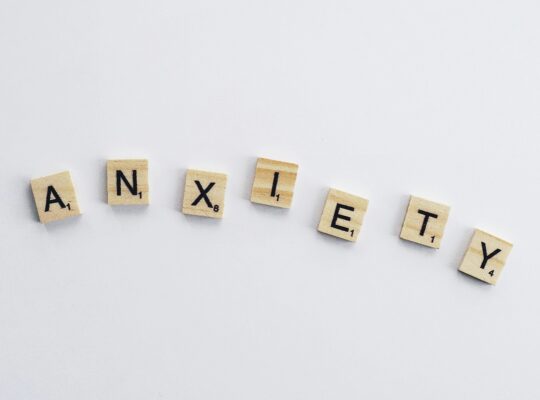If I had a nickel for every time, someone asked me, “What condition do you have again” I would be rich. I have longed to write this article for a while now and am excited to bring more attention to this misunderstood and hard-to-diagnose condition.
Copper is an essential mineral that plays a vital role in various bodily functions, including forming red blood cells, maintaining healthy bones and connective tissues, and regulating the immune system. However, like many things, too much of a good thing can be harmful. Copper toxicity is a condition that occurs when there is an excessive buildup of copper in the body, leading to a range of health problems.
In this article, I will explore what copper toxicity is, what causes it, and how it affects the physical body, and copper toxicity neurological symptoms. I will also discuss how it is diagnosed, and the treatment options I’ve found most beneficial.
Table of Contents
What is Copper Toxicity?
Heavy metal poisoning is widespread today, with the most common being mercury and lead, but did you know that copper is also a culprit?
Copper is an essential nutrient the body requires in small amounts to carry out various physiological processes. Physically copper maintains healthy bones, helps with cardiovascular function, and maintains a healthy immune system. Mentally, it affects the development and function of the central nervous system and regulates the synthesis of neurotransmitters that affect psychiatric symptoms.
One of the reasons acute copper toxicity is so hard to diagnose is because of the many symptoms and other conditions it mimics. This is because copper is essential to adequately function the nervous, endocrine, and immune systems and the abovementioned processes.
However, excess levels of copper in the body can lead to a condition known as copper toxicity. Copper toxicity occurs when the body cannot eliminate excess copper, leading to a buildup of copper in the tissues and organs. This can damage the liver, brain, and other organs and lead to various symptoms and health problems.
Copper toxicity can also be referred to as copper poisoning or hypercupremia. In addition, several medical conditions can cause or contribute to copper toxicity, such as Wilson’s and Menke’s diseases. These conditions are genetic disorders that affect copper metabolism and can lead to the accumulation of copper in the body.
While I’ve had symptoms my entire life, I would say they got worse in my mid-twenties, and I was not correctly diagnosed until I was 31 by a TCM doctor I was working with in Bali. She had a hunch and ordered an HTMA hair test and genetic testing, and the results showed my copper levels were THROUGH THE ROOF. The more we learned about my genetics, the more it made so much sense that this had been bothering me for years!
What are the symptoms of Copper Toxicity?
Copper toxicity symptoms can include physical and mental health symptoms and be different for everyone.
Physical Symptoms
- Nausea
- Dizziness
- Recurring Candida and bladder infections
- Fatigue and “adrenal fatigue.”
- Hypothyroidism
- Hair loss
- Blood sugar dysregulation or sugar cravings
- Histamine intolerance
- Food sensitivities and allergies
- Acne
- Chocolate cravings
- Anemia
- Allergies and mold sensitivity
- Poor immune function
- Insomnia
- Joint aches and pains
- Headaches/Migraines
- Fibromyalgia
- Excessive PMS symptoms, estrogen intolerance
- Lower metabolism rate
I remember reading this list first and thinking, OMG, this is me! I have dealt with food and environmental allergies, insomnia, hormonal mood swings, and candida and bladder infections since I was 14. Previous doctors told me I had adrenal fatigue, histamine intolerance, hypothyroidism, and PMDD. At the time of my initial diagnosis in Bali, I was dealing with hair loss, extreme fatigue, dizziness, severe acne on my checks (which I had never before had), crazy chocolate cravings, and recently gained 15 lbs in a short period.
Copper Toxicity Neurological Symptoms
While several things influence mental health problems with copper toxicity, I will focus on the main one or the one I found most enlightening from my personal experience.
When we focus on the key minerals that influence the functionality of our brain, Zinc and copper have a special relationship. Zinc is a calming, stabilizing mineral and a powerful antioxidant. It also helps makes GABA which is the body’s natural antidepressant. Copper, however, is fierier as it is known to fire up the brain. When copper is in excess, it blocks serotonin (happy mood) and melatonin (sleep hormone) and significantly lowers Zinc. When you have high levels of copper, you can experience the following symptoms:
- Racing Thoughts and restlessness
- Panic attacks
- Intolerance to SSRIs (Selective serotonin reuptake inhibitors, aka antidepressants.)
- High Anxiety and stress intolerance
- Depression
- Lack of concentration and focus
- Memory loss
- Manic mood swings
- OCD
- Extreme sensitivity to bright lights and noises
- Learning disabilities (for me… my speech is affected)
For anyone experiencing mental health issues, regardless of whether it’s related to copper toxicity, I send you love and know that you are not alone. Also, please note that many factors contribute to mental health symptoms, and I always recommend seeing a licensed professional and not self-diagnosing yourself.
Causes of Copper Toxicity
Copper toxicity can be caused by a variety of factors, including:
Genetics
Some individuals may be genetically predisposed to copper toxicity due to gene mutations responsible for copper metabolism. After undergoing genetic testing, I learned that my body has difficulty producing and regulating Zinc, leading to my high copper levels. This was not the only aspect causing this, but I found this super interesting and insightful.
Copper toxicity can also be caused in utero if the mother has excessive levels of copper in her body during pregnancy. This can occur due to genetic factors, environmental exposure, or dietary intake. The developing baby can be exposed to high levels of copper through the placenta, which can lead to copper toxicity and potentially cause developmental problems or other health issues.
Environmental & Occupational Exposure
Exposure to high levels of copper in the environment, such as through contaminated water or soil, can lead to copper toxicity, especially if you live in an older home built before 1980, which will probably have copper pipes. Other causes are fungicides and pesticides, copper cookware, and hot tubs and pool chemicals.
Certain occupations, such as those involving the manufacturing of copper products, can increase the risk of copper toxicity.
Copper Is Found In Many Foods
The highest concentrations in chocolate, seafood, nuts, avocado, mushrooms, and french fries, and you will crave these ON A DAILY BASIS. As anyone knows me well, before learning I have copper toxicity, all of these foods (minus French fries, funny enough) were my FAVORITE FOODS, and I ate them almost daily.

Birth Control
The ongoing debate surrounding oral hormonal contraceptives (OHC) and copper IUDs and their potential link to copper toxicity is indeed intriguing. While research indicates that OHC can elevate copper levels in the body, the copper released from a copper IUD is not easily absorbed. This dichotomy presents a fascinating yet complex puzzle.
An observation shared by both myself and clients who have used OHC long-term is the manifestation of higher estrogen dominance, often signaling copper toxicity. Estrogen’s ability to promote copper retention and accumulation exacerbates this connection.
The intricate relationship between copper and estrogen further complicates matters. Copper stimulates estrogen production, while estrogen, in turn, enhances copper retention, creating a double-edged sword. Consequently, this creates symptoms such as PMS, acne, histamine issues, joint pain, headaches, weight gain (particularly in the hips, belly, and thighs), low energy, fatigue, irritability, reproductive issues, and a diminished sex drive.
For me, discontinuing OHC years ago was pivotal, not only in addressing my copper toxicity but also in initiating profound changes in my health. Considering this, I advocate for discontinuing hormonal birth control for expedited and optimal recovery from copper toxicity amidst the debate between OHCs and Copper IUDs.
Vegan and vegetarian diets
First, I’m not saying a vegan or vegetarian diet is wrong, BUT it’s not the best for someone with high copper levels. Plant-based diets are high in copper and low in bioavailable Zinc, which balances copper levels. Stomach acid can also be decreased, impacting mineral absorption and potentially copper levels.
I decided to go vegan for 12 months when I was 28, and I FELT AWFUL. I didn’t fully understand why I felt so awful until I learned I had copper toxicity and that my body also needs many proteins to function optimally.
Testing For Copper Toxicity
Unfortunately, your general practitioner might lack extensive knowledge in this domain, or they may only be familiar with Wilson’s Disease, which, although it’s still important to test for, is a rare condition where copper toxicity won’t necessarily be detected. From my experience, they might recommend medications such as anti-depressants, birth control pills, anti-anxiety drugs, or ADD/ADHD medication to alleviate your symptoms. However, these treatments fail to address the underlying cause and can often make things worse.
Alternatively, seeking guidance from a Holistic Nutritionist (like myself 😉 ), well-versed in preventive, holistic, and alternative healthcare, may offer a more tailored approach. These practitioners focus on identifying the underlying causes of dysfunctions through patient symptoms and functional lab testing.
With my clients, I first meet for a comprehensive wellness consult to evaluate symptoms, and when investigating copper toxicity, a Hair Tissue Mineral Analysis (HTMA) is the preferred test. This analysis provides valuable insights, ranging from acute copper toxicity to severe cases, along with a comprehensive panel of other essential minerals.
When addressing Copper Toxicity, it’s crucial to recognize that zinc isn’t the sole mineral requiring attention. Calcium, sodium, potassium, magnesium, molybdenum, and GABA levels are also affected. Regularly monitoring your mineral levels through retesting with your practitioner allows for tracking progress and making necessary adjustments.
The companies I use for testing are Five Strands (use code EricaBreenWellness), and the Minerals & Metals Test from Equi.Life.
Treatment
Unfortunately, there is no simple, easy way of treating or removing copper toxicity. A “quick detox” or simply removing copper foods from your diet will NOT WORK. First, you need to accept that it will be a long journey (patience is key), and I highly suggest working with a trained professional as it is a very complex condition.
I’m going to share the things that help me and that I continue to do on a daily and weekly basis. I test my copper levels every six months, which have steadily declined since I started the below.
Chelation Therapy
Chelation therapy is when a medication binds to the excess copper and facilitates its elimination from the body. I tried this, and unfortunately, my body had an adverse reaction, and I could not continue with the treatment due to the potential risk of damaging my kidneys. This is typically the first step for treating copper toxicity, and I would encourage anyone to try it under supervised medical care.
Supplementation
There are several essential supplements that I started taking to address my copper dysregulation. They are NAC with Molybdenum and a high-quality B-Vitamin and Zinc supplement. Equi.Life is my preferred resource for both, and you can buy both here.
Support your liver, gallbladder
A properly functioning liver and gallbladder will help ensure copper and other toxins are being correctly eliminated from your body. I’m a big believer in drinking hot lemon water every morning when I wake up, and I try to include as many dark leafy greens as possible, like kale and swiss chard.
Support gut health
Gut health is a key factor for any form of toxicity. First of all, your digestive system must be adequately absorbing nutrients and minerals that will promote an overall balance. Secondly, the digestive system is a crucial detox pathway, and a daily bowel movement ensures those toxins being eliminated by the liver through the bile are being adequately expelled.
One of my favorite Gut resources is ARMRA. ARMRA colostrum supports gut health by enhancing the mucosal barrier, promoting a healthy gut microbiota, regulating immune response, aiding tissue repair, and reducing inflammation. Use code “ERICA10” for a discount.
Reduce stress and support adrenal health
Your adrenals help your liver produce ceruloplasmin which is a copper transport protein. Copper needs a protein like this to help get out of the body. As adrenals weaken, this bio-unavailable copper can’t be utilized by your cells and will start to get stored in places like your liver and brain. Now the liver is even more impaired in helping detox metals. When the body is under stress, it uses up stored nutrients that help reduce copper, making it even more challenging to deal with stress symptoms.
My favorite way to unstress is breath work and lying on my acupressure mat. I aim to do this 20 minutes a day and instantly notice how calmer I am each time. I also prioritize daily walks outside, especially by the ocean, which positively affecting my mood. Last, to the best of my ability, I limit bright lights and noises, which helps keep my nervous system at bay, reducing my overall stress.

Sweat it out
Numerous research has shown how great sweating is for detoxing heavy metals.
I’ve always been a massive fan of infrared saunas and got into a weekly routine while living in Europe. I noticed instant results and relief from my symptoms and as I’ve now made CA my home base. As I’ve now made CA my home base, I’ve had difficulty finding an infrared sauna and keeping a consistent schedule. I had to think long and hard about this because it is an expense, but I finally decided to get a HigherDose sauna blanket, and I couldn’t be happier with my decision as it’s worth every penny.
I can now do it 3x a week in the comfort of my home and enjoy the silence with meditation or listen to a podcast. It’s easily my favorite self-care ritual, and my body and mind feel so relaxed after each session. Click here and use code EB15 for a discount.
Test Your Vaginal Microbiome
While I’ve had gut issues, I’ve had more issues with my vaginal microbiome. I’ve seen countless doctors over the years and tried numerous medications, and nothing worked for the candida and recurring BV and yeast infections I kept getting.
I heard about Evvy and decided to look into and was blown away by the research and decided to try their test. I got my results back, and they were fascinating and explained why I still had issues. I chose to work with their Integrative clinical care for a two-month program to rebalance my vaginal microbiome.
Copper Dumping
However, if detoxing from copper toxicity isn’t managed carefully or happens too quickly, it can lead to Copper Dump Syndrome.
Various supplements and activities, including zinc, NAC, molybdenum, vitamin C, and intense exercise or calorie restriction, can trigger this syndrome. Its effects can significantly disrupt daily life, causing anxiety, exhaustion, constipation, insomnia, emotional fluctuations, and more. Therefore, working with a skilled practitioner who understands how to navigate this process effectively is crucial.
A practitioner like myself will assist in accurate dosing, finding suitable binders, maintaining a manageable pace, and supporting vital bodily functions to minimize dump symptoms. While copper detoxification takes time and may lead to fluctuations in how you feel, the benefits far outweigh the challenges, making it an essential step toward achieving overall health and well-being.
How long does it take to heal from Copper Toxicity?
The length of time it takes to correct copper toxicity depends on many factors, such as the extent of accumulation and the body’s natural ability to detox the excess copper. Depending on the severity and the level of commitment, it can take six months to several years to correct a copper imbalance. I STRONGLY encourage patience and working with a professional, as moving too quickly or trying to “detox” from copper can have adverse effects such as copper dumping. Healing is an individualized journey, and there is no one-size-fits-all approach to Copper Toxicity.
Takeaway
Copper is a highly underestimated mineral in terms of its overall impact on our health, and copper toxicity is more common than one might think. I hope to share my story to bring more awareness to copper toxicity and help others heal.
Thanks for being with me. E
If you suspect you have copper toxicity based on the symptoms described above, I would love to help and book your consultation with me today.
If you are pregnant, breastfeeding, or taking medications, consult with your doctor before starting a supplement routine. It is always optimal to consult with a healthcare provider when considering what supplements are right for you.
Some of the links are affiliate links, meaning that if you click on the links and make a purchase, I may receive a commission. This commission comes at no additional cost to you. Please note that I only recommend products and services that I have personally used and believe in.
Images courtesy of Upsplash or are my own.






